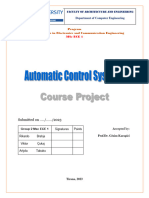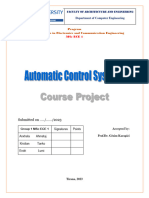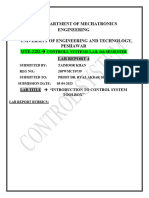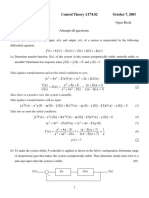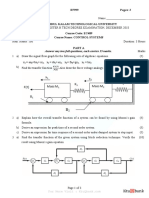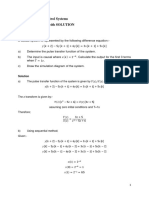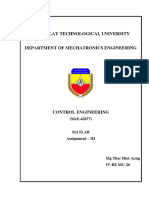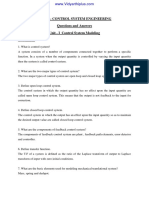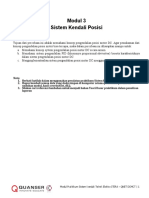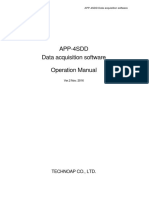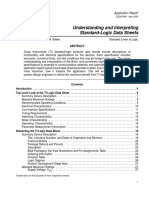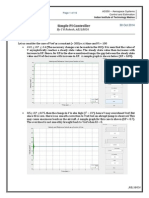0% found this document useful (0 votes)
148 views24 pagesMATLAB Polynomial and Transfer Function Analysis
The document discusses using MATLAB to analyze polynomial functions and transfer functions.
1) It defines various polynomials and finds their roots and values. 2) Transfer functions are created using tf() and their impulse and step responses are plotted. 3) Partial fraction expansion is performed on a transfer function. 4) Effects of changing forward path gain and pole location are examined. 5) P, PI, and PID controllers are added to a second order plant and their effects on closed loop response are analyzed.
Uploaded by
tommy merlynCopyright
© © All Rights Reserved
We take content rights seriously. If you suspect this is your content, claim it here.
0% found this document useful (0 votes)
148 views24 pagesMATLAB Polynomial and Transfer Function Analysis
The document discusses using MATLAB to analyze polynomial functions and transfer functions.
1) It defines various polynomials and finds their roots and values. 2) Transfer functions are created using tf() and their impulse and step responses are plotted. 3) Partial fraction expansion is performed on a transfer function. 4) Effects of changing forward path gain and pole location are examined. 5) P, PI, and PID controllers are added to a second order plant and their effects on closed loop response are analyzed.
Uploaded by
tommy merlynCopyright
© © All Rights Reserved
We take content rights seriously. If you suspect this is your content, claim it here.
/ 24

